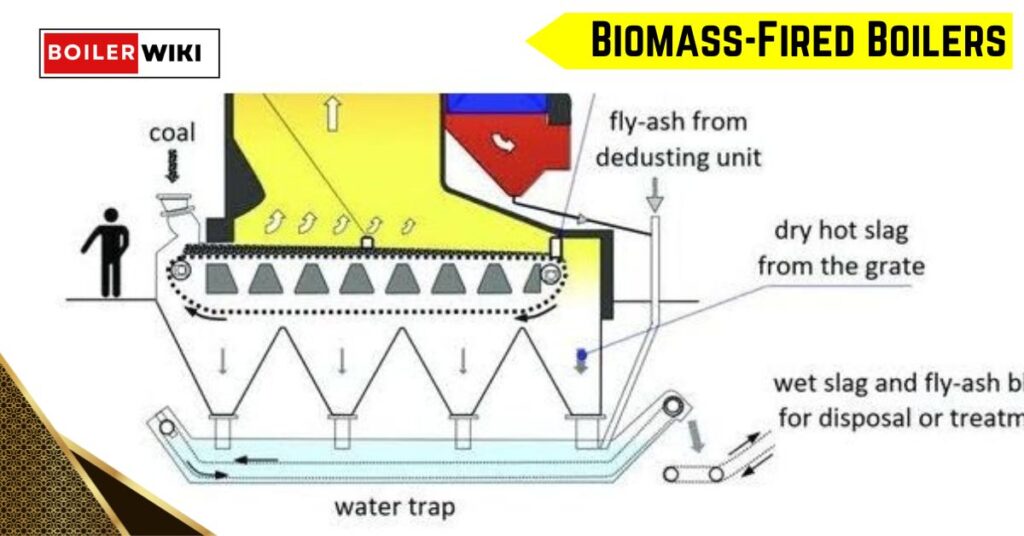Biomass-Fired Boilers: The Sustainable Solution for Modern Heating Needs
Introduction
Many countries generate significant agricultural waste annually but underutilize much of it. However, they can transform this waste into a valuable resource for renewable energy, reducing their reliance on fossil fuels. Among the various methods of converting biomass into energy, biomass-fired boilers have emerged as a highly effective solution for producing steam and electricity.

How Do Biomass-Fired Boilers Work?
Biomass-fired boilers operate on principles similar to conventional fossil fuel-fired boilers, with one key difference—the fuel source. Instead of coal, oil, or natural gas, these boilers fuel organic materials like wood chips, agricultural residues, or energy crops. The combustion process in biomass-fired boilers converts the energy stored in organic materials into steam, which can then be used for heating, industrial processes, or electricity generation. Several advanced combustion technologies ensure efficient and clean biomass burning, including:
- Traveling Grate Firing
- Spreader Stoker
- Suspension Combustion
- AFBC (Atmospheric Fluidized Bed Combustion)
- CFBC (Circulating Fluidized Bed Combustion)
Types of Biomass-Fired Boilers
Biomass-fired boilers fall into two primary configurations based on their fuel usage:
1. Direct Biomass-Fired Boilers
Direct biomass-fired boilers use only biomass as the fuel. Unlike conventional boilers, these systems include a furnace, membrane-type water wall, air heater, economizer, evaporator, and superheater. The fuel handling system is specifically designed to supply biomass fuel, which can vary depending on availability. For example, farmers and energy producers may use agricultural waste during harvest seasons, while they might use wood chips or municipal waste at other times.
2. Co-Firing Boilers
Co-firing involves using biomass and coal as fuel sources in the same boiler. This approach allows existing coal-fired boilers to reduce their reliance on fossil fuels while incorporating renewable biomass energy.
There are two main methods of co-firing:
- Blended Co-Firing: Biomass is mixed with coal before entering the combustion chamber. Unique fuel handling systems ensure proper blending for optimal combustion.
- Separate Injection Co-Firing: Biomass is injected separately into the furnace alongside coal, offering greater flexibility in controlling combustion conditions.
Co-firing is an attractive solution for integrating renewable energy into existing infrastructure, reducing carbon emissions, and improving sustainability without needing entirely new systems.
3. Combustion Technologies for Biomass-Fired Boilers
Biomass combustion in boilers relies on advanced technologies to ensure efficiency, reduce emissions, and handle diverse fuel types. Here’s a closer look at some of the most common technologies:
- Travelling Grate Firing: A moving grate allows for continuous combustion by supplying oxygen to the biomass. This method is ideal for solid fuels like wood chips and agricultural residues.
- Spreader Stoker: A mechanical spreader spreads biomass onto a grate or furnace, making it suitable for large-scale power plants.
- Suspension Combustion: The system introduces biomass into the furnace in a fine mist or spray, facilitating fast combustion similar to pulverized coal (PC).
- AFBC (Atmospheric Fluidized Bed Combustion): In this process, biomass is burned within a bed of hot, fluidized particles, which promotes consistent temperature distribution and allows for the combustion of low-grade or mixed waste materials.
- CFBC (Circulating Fluidized Bed Combustion) is an advanced version of AFBC that continuously circulates fuel within the bed. This results in higher combustion efficiency and versatility in handling diverse biomass fuels.
Advantages of Biomass-Fired Boilers
Biomass-fired boilers offer numerous benefits, making them a sustainable and practical choice for modern heating and power generation needs:
- Renewable Energy Source: Biomass is a renewable resource, reducing dependency on non-renewable fossil fuels.
- Carbon Neutrality: Plants absorb CO₂ during their growth, which offsets the CO₂ released during biomass combustion, making it a carbon-neutral energy source.
- Waste Utilization: Farmers and energy producers convert agricultural and forestry waste, which would otherwise end up in landfills, into valuable energy.
- Lower Emissions: Biomass boilers emit significantly lower levels of sulfur dioxide, nitrogen oxides, and particulate matter than coal-fired boilers.
- Local Economic Benefits: Biomass power plants create jobs in agriculture, forestry, and energy sectors, boosting local economies.
Conclusion
Biomass-fired boilers are a game-changer in the quest for sustainable energy solutions. By converting agricultural waste and other organic materials into heat and power, they offer a cleaner, renewable alternative to conventional fossil fuels. Whether used as a direct fuel or in co-firing configurations, biomass-fired boilers are crucial in reducing environmental impacts, promoting energy security, and supporting local economies.
As technology advances, biomass-fired boilers will become even more efficient and versatile, solidifying their place as a key component of the global transition to renewable energy. Biomass-fired boilers are undoubtedly worth exploring if you consider a sustainable heating or power generation solution.
“We greatly appreciate you taking the time to read our article!“Biomass-Fired Boilers: The Sustainable Solution for Modern Heating Needs” To help us reach a wider audience and continue creating valuable content, we kindly ask that you like and share this article on your preferred social media platforms. Your feedback is also invaluable. Please take a moment to leave a comment below, sharing your thoughts and insights on the article in 100 words or less. Your input helps us understand what resonates with our readers and allows us to improve our future content.”